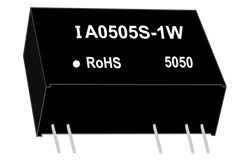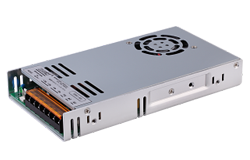noticias
Converting 110V AC to 12V DC: A Guide
Autor: Módulo de potencia ZYG Time: 2023-5-16
Many electronic devices that we use in our daily lives require a direct current (DC) power supply to function. However, the power supply in our homes provides an alternating current (AC) voltage of 110V. Therefore, to power these devices, we need to convert the AC voltage to DC voltage. In this guide, we will discuss the steps needed to convert 110V AC to 12V DC.
Step 1: Determine the Load Requirements
Before you start the conversion process, you need to determine the load requirements of the device you want to power. This includes the voltage and current rating of the device. For example, if the device requires a 12V DC power supply with a current rating of 1A, you need to ensure that your power supply can deliver this amount of current.
Step 2: Choose the Power Supply
Once you have determined the load requirements of the device, you need to choose the appropriate power supply. There are two types of power supplies: linear and switching.
Linear Power Supply: A linear power supply is a simple and low-cost solution for converting AC to DC. It works by using a transformer to reduce the AC voltage and then uses a rectifier to convert the AC voltage to DC voltage. However, linear power supplies are not very efficient and can produce a lot of heat.
Switching Power Supply: A switching power supply is a more efficient and complex solution for converting AC to DC. It uses a switching regulator to convert the AC voltage to DC voltage. Switching power supplies are more expensive than linear power supplies, but they are more efficient and produce less heat.
Step 3: Convert the AC Voltage to DC Voltage
Once you have chosen the power supply, you need to convert the AC voltage to DC voltage. This can be done by using a rectifier circuit. A rectifier circuit converts the AC voltage to DC voltage by using a diode or a bridge rectifier.
Diode Rectifier: A diode rectifier is the simplest form of rectifier circuit. It uses one or more diodes to convert the AC voltage to DC voltage. However, a diode rectifier can only provide a half-wave rectification, which means that it only uses half of the AC cycle.
Bridge Rectifier: A bridge rectifier is a more complex form of rectifier circuit. It uses four diodes arranged in a bridge configuration to convert the AC voltage to DC voltage. A bridge rectifier provides a full-wave rectification, which means that it uses both halves of the AC cycle.
Step 4: Filtering the DC Voltage
The DC voltage produced by the rectifier circuit is not pure DC voltage. It contains a lot of ripple, which can cause interference and damage to the device. Therefore, you need to filter the DC voltage to remove the ripple. This can be done by using a capacitor or an LC filter.
Capacitor Filter: A capacitor filter is the simplest form of filter circuit. It uses a capacitor to smooth out the DC voltage by storing charge during the peaks of the DC voltage and releasing it during the troughs of the DC voltage.
LC Filter: An LC filter is a more complex form of filter circuit. It uses an inductor and a capacitor to filter out the ripple from the DC voltage. An LC filter provides a smoother and more stable DC voltage, but it is more expensive and complex than a capacitor filter.

Step 5: Regulation and Protection
Once you have filtered the DC voltage, you need to regulate it to ensure that it stays at a constant voltage level. This can be done by using a voltage regulator circuit. A voltage regulator circuit regulates the DC voltage by adjusting the output voltage based on the input voltage and the load requirements of the device.
You also need to protect the device from overvoltage, undervoltage, and overcurrent. This can be done by using a protection circuit. A protection circuit monitors the DC voltage and current and protects the device from any potential damage.
Conclusion
Converting 110V AC to 12V DC requires a few simple steps. First, you need to determine the load requirements of the device. Then, you need to choose the appropriate power supply, rectifier circuit, filter circuit, voltage regulator circuit, and protection circuit. By following these steps, you can convert the AC voltage to DC voltage and power your devices with ease.
Anterior: What is AC DC adapter 12V used for?
Próximo: 12V AC-DC Converter: Efficient Power Conversion Solution
informacion relevante
-
2023-6-20
AC DC Converter Module: An Advanced Power Solution for Industrial Applications
An AC DC converter module is an advanced power solution that is becoming increasingly popular in industrial applications. This module is designed to convert alternating current (AC) to direct current (DC) and is used to power a wide range of devices and equipment in industries such as telecommunications, medical, industrial automation, and many others. In this article, we will explore the features and benefits of AC DC converter modules and how they are being used in industrial applications. Features of AC DC Converter Modules AC DC converter modules come in a variety of designs and configurations, but they all share some common features. These include: 1. High Efficiency: AC DC converter modules are highly efficient, with some modules boasting efficiency...
Ver detalles -
2023-10-13
The Ultimate Guide to Choosing the Best Modular Power Supply for Your Gaming PC
When building a gaming PC, there are several crucial components that require careful consideration. One such component is the power supply unit (PSU), which is responsible for providing a stable and reliable power source to all the other components. In recent years, modular power supplies have gained popularity among PC enthusiasts due to their flexibility and ease of cable management. In this guide, we will explore the factors to consider when choosing the best modular power supply for your gaming PC. 1. Wattage and Efficiency The first step in selecting a modular power supply is to determine the appropriate wattage for your gaming PC. The wattage rating of a PSU indicates the maximum amount of power it can deliver to...
Ver detalles -
2023-6-5
SD Series AC DC Power Supply: Reliable and Efficient Solution for Your Power Needs
With the advancements in technology and the increasing demand for electronic devices, having a reliable and efficient power supply is crucial. The SD Series AC DC power supply is a top-choice for professionals and businesses who require a safe and stable source of power for their devices. The SD Series AC DC power supply is a compact and versatile power supply that offers a wide range of features and benefits. It is designed to meet the demanding needs of various applications such as telecommunications, medical equipment, laboratory instruments, and industrial machinery. The power supply is equipped with advanced features such as overvoltage protection, overcurrent protection, short-circuit protection, and over-temperature protection, ensuring the safety and protection of your devices in any...
Ver detalles -
2023-12-29
DC-DC Power Supply Module: Efficient and Reliable Solution for Power Conversion Needs
In today's rapidly evolving technological landscape, the need for efficient and reliable power conversion solutions has never been more critical. From smartphones to electric vehicles, nearly every electronic device relies on an efficient power supply to function optimally. One such solution that has gained significant popularity is the DC-DC power supply module. A DC-DC power supply module is a compact electronic device that converts one DC voltage level to another, ensuring a stable and reliable power supply for various applications. With its numerous advantages, it has become an indispensable component in a wide range of industries. One of the primary benefits of using a DC-DC power supply module is its high efficiency. Unlike traditional linear regulators, which dissipate excess power...
Ver detalles -
2023-5-27
Converting 110V AC to 12V DC: A Comprehensive Guide
Converting 110V AC to 12V DC is a common requirement in many applications, such as in automotive and marine environments, as well as in lighting and electronic devices. The process involves using a device known as a power supply or converter, which is designed to transform the high-voltage alternating current (AC) from the mains electricity supply into low-voltage direct current (DC) that can be used by electronic devices. This comprehensive guide will explain the process of converting 110V AC to 12V DC in detail. Understanding AC and DC Before discussing how to convert 110V AC to 12V DC, it is important to understand the difference between AC and DC. AC is the type of electrical current that is supplied to...
Ver detalles -
2023-7-23
Exploring the Applications and Advantages of Bidirectional DC-DC Converters
Introduction Bidirectional DC-DC converters have gained significant attention in recent years due to their versatile applications and advantages. These converters are capable of transferring power bidirectionally between two DC sources or systems with different voltage levels. In this article, we will explore the various applications and advantages of bidirectional DC-DC converters. Applications of Bidirectional DC-DC Converters 1. Electric Vehicles (EVs) One of the most significant applications of bidirectional DC-DC converters is in electric vehicle systems. These converters play a crucial role in managing the power flow between the vehicle\'s battery pack and the electrical grid. During charging, the bidirectional converter allows power to flow from the grid to the battery pack efficiently, enabling fast and controlled charging. On the other...
Ver detalles

















